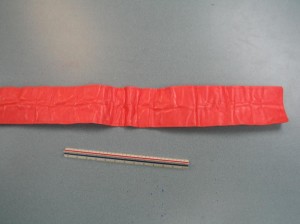Skier’s thumb, also known as sprained thumb, refers to an injury that occurs due to the tearing of one of the ligaments of the thumb. Ligaments help in supporting the joint and connecting the bone of the hand to the thumb. Ligaments are tough bands that secure the placement of the bone and keep them aligned in a normal state while making movement. A skier’s thumb injury will take place if the thumb is forced to move beyond its normal limitation due to an accident or fall. The injury is known as a skier’s thumb as skiers tend to typically fall on their thumbs while holding on to their ski poles.
A person with a skier’s thumb may experience pain, bruising and swelling around the thumb. The person may also have difficulty moving the affected thumb and holding objects.
The doctor will recommend resting your thumb, applying cold compresses, elevating, a thumb splint and NSAIDs. In case of a completely torn ligament, surgery may be required to repair it.
Disclaimer: the material posted on this article about skier’s thumb is for learning purposes only. To learn about bone, muscle, joint and ligament injuries and how to recognize and manage them enrol in workplace approved first aid and CPR courses.
Causes
Skier’s thumb occurs as a result of forcefully pulling the thumb or turning it beyond its limitation of motion. Most skiers suffer from this condition when their thumb is pushed forcefully against a skiing pole.
Causes of skier’s thumb include:
- Sports injuries such as skiing
- Motor vehicle accidents
- Occupational injuries
Signs and symptoms
Signs and symptoms of skier’s thumb include:
- Thumb pain – usually at the base of the thumb
- Bruising – at the base of the thumb
- Swelling – at the base of the thumb
- Unilateral hand pain – the person may have difficulty using his hand and lifting objects
- Unilateral hand weakness – inability to carry objects and hold objects with the thumb and index finger
- Inability to bend the affected thumb
Treatment
1. Follow RICE to reduce swelling:
- Rest the thumb – do not use it; apply a thumb splint
- Ice the affected thumb using an ice compress to reduce pain and swelling
Splints, such as the one posted above, can be cut apart and used for smaller areas such as the thumb - Compress and immobilize using an elastic gauze or brace
- Elevate the thumb
2. Take over-the-counter pain medication such as acetaminophen or ibuprofen to ease pain. Avoid giving aspirin to children and teenagers under 18 years of age as it may lead to a rare yet fatal disease called Reye’s syndrome.
See your doctor as soon as possible. Your doctor will most likely take an X-ray of your thumb to check the severity of the damage. A partially torn ligament will be treated by applying a thumb splint, whereas, more complicated injuries that may involve the complete tear of a ligament may require surgery.
Warning signs
Notify your doctor if any of the following problems occur:
- Worsening thumb pain or thumb swelling
- Worsening hand weakness
- Unilateral hand numbness
- Inability to move the affected thumb
Complications
Complications that may be associated skier’s thumb include:
- Disability – difficulty moving or using the affected thumb
- Thumb stiffness
- Chronic thumb pain
- Arthritis of the thumb
Learn More
To learn more about sports injuries and how to recognize and manage them sign up for a workplace approved first aid course (more information).
Related Video

